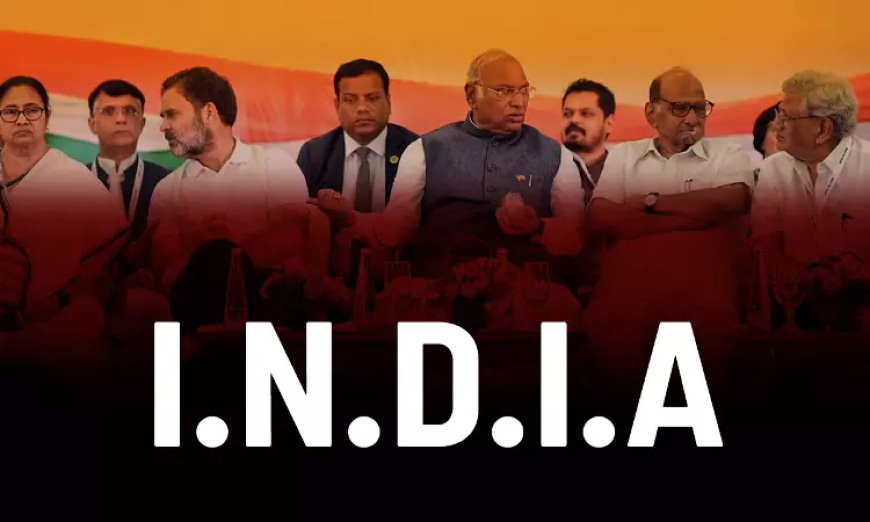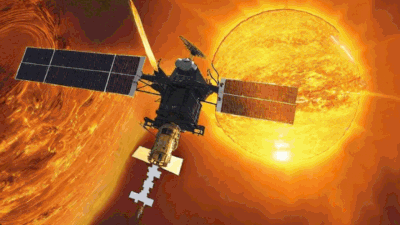I.N.D.I.A.: A Big Tent Alliance in Indian Politics
The Indian National Developmental Inclusive Alliance (I.N.D.I.A.) was formed by 28 parties as an opposition front for the 2024 Lok Sabha elections, aiming to challenge the ruling National Democratic Alliance led by the Bharatiya Janata Party. However, internal conflicts, disagreements over seat sharing, and the departure of key players have cast uncertainty over the alliance's future and its ability to present a united front in the upcoming elections. Despite initial momentum, I.N.D.I.A.'s effectiveness in challenging the NDA government remains uncertain due to internal challenges and party defections.

The leaders of 28 parties have announced their formation of the Indian National Developmental Inclusive Alliance, or I.N.D.I.A., as an opposition front to compete in the 2024 Lok Sabha elections. The 28 people involved in the meeting in Bengaluru unanimously approved the name that had been suggested.
Under the direction of the Indian National Congress, 40 political parties make up the large political coalition known as I.N.D.I.A. In the general elections of 2024 in India, the alliance is running against the National Democratic Alliance administration, which is led by the Bharatiya Janata Party (BJP).
Background
The idea for a new alliance was presented at the first opposition parties' meeting, which was presided over by Bihar Chief Minister Nitish Kumar on June 23, 2023, in Patna, Bihar. There were sixteen opposition parties present at the meeting. The second meeting took place July 17–18 in Bengaluru, Karnataka. When the proposal for an alliance was approved and 10 more parties were added to the list, it was presided over by UPA Chairperson Sonia Gandhi. The Indian National Developmental Inclusive Alliance was chosen as the alliance's official name.
The third and fourth meetings were held in Mumbai and New Delhi respectively. In these meetings, the alliance discussed major electoral issues for the upcoming general elections, seat sharing, joint rallies, and the face of the prime minister.
The fifth meeting was held virtually, in which the Indian National Congress President Mallikarjun Kharge was declared the alliance chairperson.
Ideology & Aim
The guiding ideals of the coalition are social justice, inclusion, and developmentalism, according to Congress President Mallikarjun Kharge.
The member parties hope to resist what they see as an ideology that undermines the concept of India, advance welfare and growth, and defend democratic values by pooling their resources.
The 26-party alliance aims to challenge the BJP on these and many other domestic issues. The first is the failure on the economic front. No new jobs have been created. There has been a lot of polarisation, hatred, and violence. All these have to be changed. That’s why I.N.D.I.A. have come together.
Parties in I.N.D.I.A.
The Dravida Munnetra Kazhagam (DMK), rules the southern state of Tamil Nadu, the Trinamool Congress (TMC), rules the significant state of West Bengal, and the Aam Aadmi Party (AAP), rules the states of Delhi and Punjab, are the other three main opposition parties that make up INDIA in addition to the Congress.
The other prominent partners are the Rashtriya Janata Dal (RJD) and Jharkhand Mukti Morcha (JMM), which together with their allies rule over adjacent Jharkhand, and the Janata Dal-United (JD-U) that jointly administer the significant eastern state of Bihar.
The National Congress Party (NCP-Sharad Pawar), the Shiv Sena (UBT), the Samajwadi Party (SP), the National Conference (NC), the People's Democratic Party (PDP), the Rashtriya Lok Dal (RLD), the Kongunadu Makkal Desia Katchi (KMDK), the Marumalarchi Dravida Munnetra Kazhagam (MDMK), the Viduthalai Chiruthaigal Katchi (VCK), the Communist Party of India- Marxist-Leninist (CPI-ML Liberation), the Revolutionary Socialist Party (RSP), the Forward Bloc, the Kerala Congress (Joseph), the Kerala Congress (Mani), the Apna Dal (Kamerawadi), the Indian Union Muslim League (IUML), and the Manithaneya Makkal Katchi (MMK).
various of these are formidable regional parties that compete head-to-head with other alliance members in multiple states. Furthermore, there are clashes between the parties' philosophies and personalities, and in regions where they are powerful, they don't seem to know when to cede ground to other organizations.
How the seats are being shared for the 2024 elections
West Bengal: Mamata Banerjee, the chief minister of West Bengal, announced on January 24, 2024, that the Trinamool Congress (TMC) will run alone in the state's next general elections, dealing a blow to the INDIA alliance.
Delhi: The AAP is anticipated to fight for four seats in Delhi, while the Congress may field candidates for three seats.
Punjab: AAP leader Arvind Kejriwal praised the Congress and AAP's decision to run separately as a "mutual agreement" devoid of animosity. In addition, the AAP announced its candidates for three seats in the Assamese Lok Sabha after the Congress-led negotiations broke down.
Uttar Pradesh: The Congress and Samajwadi Party jointly declared on February 21, 2024, that the Congress would contest 17 of the state's 80 seats, with alliance partners winning the other seats. There were discussions on seat sharing in Madhya Pradesh, where there was a chance that SP may run for the Khajuraho seat.
Breaking of I.N.D.I.A.
In 2023, the Maharashtra Nationalist Congress Party (Ajit Pawar Faction) broke away from I.N.D.I.A. In contrast, the Rashtriya Lok Dal of Uttar Pradesh and the Janata Dal of Bihar withdraw in 2024.
On January 28, 2024, Nitish Kumar announced his resignation as chief minister of Bihar. He gave two reasons for his resignation: he was unhappy with the way the administration was handling the state and he wanted to quit the Mahagathbandhan alliance, which is a part of the INDIA bloc in Bihar. He was welcomed back by the National Democratic Alliance (NDA).
Future of I.N.D.I.A.
The future of I.N.D.I.A. appears uncertain, some of the reasons for this are-
Internal conflicts: The alliance consists of several factions with sporadically divergent viewpoints and ambitions for leadership. As such, putting up a united front and formulating a clear agenda becomes difficult.
Problems with seat sharing: Disagreements over seat distribution in crucial states like West Bengal, Delhi, Punjab, and Uttar Pradesh have made the coalition weaker and forced several parties to run as independents.
Separate parties: Several key players have departed from I.N.D.I.A., such as the Uttar Pradesh-based RLD, the Bihar-based JD(U), and the Maharashtra-based NCP (Ajit Pawar faction).
These components suggest that I.N.D.I.A. might not be a dependable or long-term alliance. Its performance in the 2024 elections and its potential to challenge the NDA government will depend on how successfully it overcomes these internal challenges.














































